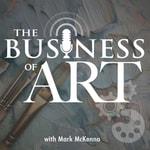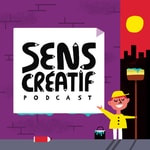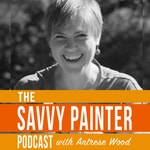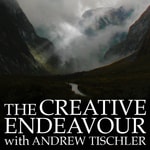The Business of Art Podcast – Details, episodes & analysis
Podcast details
Technical and general information from the podcast's RSS feed.

The Business of Art Podcast
Mark McKenna
Frequency: 1 episode/13d. Total Eps: 31

Recent rankings
Latest chart positions across Apple Podcasts and Spotify rankings.
Apple Podcasts
🇺🇸 USA - visualArts
24/07/2025#71🇺🇸 USA - visualArts
23/07/2025#63🇺🇸 USA - visualArts
22/07/2025#53🇺🇸 USA - visualArts
21/07/2025#43🇺🇸 USA - visualArts
20/07/2025#43🇺🇸 USA - visualArts
19/07/2025#52🇺🇸 USA - visualArts
18/07/2025#30🇺🇸 USA - visualArts
17/07/2025#38🇺🇸 USA - visualArts
09/07/2025#53🇺🇸 USA - visualArts
08/07/2025#43
Spotify
No recent rankings available
Shared links between episodes and podcasts
Links found in episode descriptions and other podcasts that share them.
See all- https://www.instagram.com/https:
114 shares
RSS feed quality and score
Technical evaluation of the podcast's RSS feed quality and structure.
See allScore global : 62%
Publication history
Monthly episode publishing history over the past years.
Episode 14 - Lindsey Kustusch Interview
Season 1 · Episode 14
mardi 20 août 2024 • Duration 01:54:57
https://linktr.ee/businessof_art
Lindsey's Links
https://www.lindseykustusch.com/
https://www.instagram.com/lkustusch
https://www.facebook.com/lindsey.kustusch
Summary
Lindsay Kustusch, a professional fine artist, shares her journey in the art world. She started as a child who loved drawing and coloring, and eventually pursued art school in Chicago and San Francisco. After exploring different subjects and styles, she found her passion in cityscape and animal paintings. Lindsay also discusses the significance of plein air painting and the challenges and rewards it brings. She talks about the mental aspects of being an artist and the barriers she had to overcome. Lindsay also explains the inspiration behind her butterfly paintings and the process of creating them. Lindsey Kustusch discusses her artistic process, including experimenting with different tools and techniques, and the importance of using a mirror to gain a fresh perspective on her artwork. She also shares her approach to social media and the benefits of having a newsletter to connect with collectors. Lindsey emphasizes the need for time management and finding a balance between painting, promoting, and other tasks. She also provides insights into maintaining good gallery relationships and ine importance or researcning ganenes belore approaching tem. in this conversation, Lindsey kustusch shares her insights on working with galleries and pricing artwork. She emphasizes the importance of finding the right gallery that aligns with your style and goals, considering factors such as location, the artists they represent, and their collector base. Lindsey also highlights the value of having a physical space to showcase your art and the benefits of galleries in promoting and selling your work. When it comes to pricing, she suggests considering complexity, size, and the value of your name as an artist. Lindsey encourages artists to have confidence, paint consistently, and focus on quantity to gain experience and grow their careers.
Takeaways
- Lindsay Kustusch's journey as a professional fine artist started from a young age and led her to pursue art school in Chicago and San Francisco.
- She found her passion in cityscape and animal paintings, specializing in plein air painting.
Lindsay discusses the mental aspects of being an artist and the barriers she had to overcome
• She explains the inspiration behind her butterfly paintings and the process of creating them. Experimenting
with different tools and fechniques can lead to new artistic discoveries
- Using a mirror can provide a fresh perspective on artwork and help with objectivity.
- Having a newsletter is an effective way to connect with collectors and promote artwork.
- Time management and finding a balance between painting and other tasks is crucial for success.
- Researching galleries before approaching them can help ensure a good fit and understanding of their art focus
Finding the right gallery is crucial for artists, considering factors such as location, the artists they represent,
and their collector base. - Having a physical space to showcase your art is valuable for promoting and selling your work.
- Consider complexity, size, and the value of your name when pricing your artwork
- Confidence, consistency, and quantity are key to growing as an artist and building a successful career.
Keywords
Lindsay Kustusch, professional artist, art journey, cityscape painting, animal painting. plein air painting, mental aspects of being an artist, butterfly paintings, artistic process, techniques, social media, newsletter, collectors, time management, balance, gallery relationships, research, art galleries, pricing artwork, finding the right gallery, promoting artwork, selling artwork, art collectors, art pricing strategies, painting consistently, quantity
Episode 13 - Kwani Winder Interview
Season 1 · Episode 13
mardi 6 août 2024 • Duration 01:32:12
https://linktr.ee/businessof_art
Kwani’s Links
https://www.facebook.com/kwaniwinder
https://www.instagram.com/kwani_winder/
Summary
Kwani Povi Winder, a professional artist since 2013, discusses balancing her art career with being a stay-at-home mom. Coming from a lineage of potters from Santa Clara Pueblo, she was encouraged to create art from a young age. After initially pursuing a biology degree, she turned to art following her father's passing. Kwani incorporates her Native American heritage into her figurative art and involves her daughters in her creative process. She shares her daily routine, which includes painting, homeschooling, and family meals. Her husband supports her by taking on parenting duties during show preparations. Kwani details her painting process, including using grids, photography, and setting up photo shoots. She emphasizes the importance of compensating models and respecting Native culture in her work. Kwani also advises artists to explore different subjects and network within the art community.
Takeaways
• Kwani Povi Winder's journey as an artist began with the encouragement of her artistic mother and a high school art teacher who inspired her.
• She initially pursued a biology degree but switched to art after her father's passing, realizing the importance of art in her life.
• Kwani incorporates her Native American heritage into her artwork, focusing on figurative art.
• As a stay-at-home artist, Kwani has found ways to involve her daughters in her art career and foster their creativity.
• Homeschooling can be a good fit for artist parents, as it allows for flexibility and the ability to travel
• Having a supportive partner is crucial for artist parents, as they can help with parenting duties and provide emotional support
• There are different paths to success as an artist, and it's important to find what works best for you
• Using grids and working from photos can be helpful in the painting process
• Participating in shows and using social media platforms like Instagram can be effective marketing strategies for artists.
• Preparing for a painting involves setting up a photo shoot and considering lighting and composition.
• Working with models can be challenging, but it's important to compensate them and respect their boundaries.
• Native American heritage plays a significant role in Kwani's art, and she strives to represent Native culture respectfully.
• Artists should consider outsourcing certain tasks to save time and focus on their strengths.
• Networking and building relationships in the art community can lead to opportunities and support.
Keywords
professional artist, stay-at-home mom, Native American heritage, figurative art, involving children in art, artist, mother, homeschooling, painting, art activities, photos, Instagram, painting, photo shoot, composition, art models, Native American heritage, artist identity, art representation, art business
Episode 4 - Dave Santillanes
Season 1 · Episode 4
mardi 21 mai 2024 • Duration 01:07:10
https://linktr.ee/businessof_art
SUMMARY
Dave Santillanes, a landscape artist, shares his journey from being a graphic designer to becoming a full- time artist. He emphasizes the importance of painting outdoors and the impact it had on his work. Dave discusses the challenges of balancing a day job with his passion for art and offers advice for aspiring artists. He also explains his creative process, which involves starting with plein air studies and then developing larger studio pieces. In this conversation, artist Dave Santillanes discusses his approach to painting, including the importance of creating smaller studies before tackling larger pieces. He also talks about the challenges of maintaining freshness and brevity in larger paintings and shares his preferred tools and materials. Santillanes emphasizes the significance of shadows in creating atmosphere and offers advice for artists looking to market their work and build relationships with collectors. He encourages artists to embrace the journey and focus on the quality of their work.
DAVE’S LINKS
https://dasanti.com
https://www.facebook.com/dave.santillanes
https://www.instagram.com/davesantillanes.art
TAKEAWAYS
Embrace the journey and understand that becoming a successful artist takes time and dedication.
If you have to work a day job, make sure it's not soul-crushing and allows you to maintain your passion for art.
Start with plein air studies to capture the essence of a scene and then develop larger studio pieces.
Photos can be a helpful reference, but it's important to analyze color and values from plein air studies.
Having a supportive family can play a crucial role in nurturing a passion for art. Creating smaller studies before tackling larger paintings can help solve color issues and save time and energy.
Maintaining freshness and brevity in larger paintings can be challenging, but it's important to find the right balance.
Shadows play a crucial role in creating atmosphere in paintings, and studying shadows can greatly improve an artist's work.
Social media and participating in shows can be effective ways to market artwork and connect with collectors.
The art career is a journey, and it's important to enjoy the process and focus on the quality of the work.
KEY WORDS
Dave Santillanes, landscape artist, Artist journey, graphic design, full-time artist, painting outdoors, balancing your day job, creative process, painting, art studies, challenges as an artist, atmospheric perspective, art tools, art materials, marketing your art, art collectors, art galleries, art shows
Episode 3 - Brent Cotton
Season 1 · Episode 3
mardi 14 mai 2024 • Duration 01:37:08
https://linktr.ee/businessof_art
SUMMARY
In this episode, Mark interviews artist Brent Cotton about his journey as an artist and his unique approach to painting. Brent shares how he was influenced by his grandmother, who was an accomplished artist, and how he started his artistic career by taking workshops and experimenting with different mediums. He discusses the importance of plein air painting and how it has shaped his style. Brent also talks about the challenges of working from photographs and the importance of pushing oneself as an artist. The conversation explores the importance of connecting with nature as an artist and the need to recharge creatively. It also delves into the process of marketing and selling artwork, including the role of galleries and the impact of social media. The conversation concludes with advice for beginners, emphasizing the importance of finding the right galleries, staying true to one's artistic vision, and balancing artistic integrity with financial considerations. Brent Cotton discusses his passion for creating uplifting and spiritual art that brings beauty and solace to viewers. He emphasizes the importance of staying true to one's artistic vision and finding joy in the creative process. Brent also shares his preferred palette and tools, including a limited color palette and the use of palette knives. He highlights the significance of lightfastness and permanence in choosing paints. While he currently does not teach workshops, he occasionally conducts classes for collectors and is open to the idea of teaching in the future.
BRENT’S LINKS
http://www.cottonfinearts.com/index.html https://www.instagram.com/cottonbrent https://www.facebook.com/pages/Cotton-Fine-Art/297899140234009
TAKEAWAYS
The importance of mentorship and learning from other artists
The value of plein air painting in capturing mood and atmosphere
The challenges of working from photographs and the need for artistic interpretation
The importance of pushing oneself as an artist and trying new subjects and styles Connecting with nature is valuable for artists to recharge creatively and add authenticity to their work.
Marketing and selling artwork can be done through galleries, national shows, and social media.
Finding the right galleries and building relationships with them is important for artists.
It is crucial for artists to stay true to their artistic vision and not chase trends.
Balancing artistic integrity with financial considerations can be challenging but necessary.
Beginners should visit galleries, do their research, and not be afraid of rejection. Creating art that is uplifting and spiritual can bring beauty and solace to viewers.
Staying true to one's artistic vision and finding joy in the creative process is essential.
Using a limited color palette and palette knives can create interesting textures and effects in paintings.
Considering lightfastness and permanence when choosing paints ensures the longevity of artwork.
Brent Cotton occasionally conducts classes for collectors and is open to the idea of teaching in the future.
KEY WORDS
Fine artist, artist, journey, oil painting, painting, plein air, creativity, recharge, authenticity, marketing, selling, art galleries, social media, trends, balance, artistic integrity, art, painting, spirituality, beauty, palette, tools, color lightfastness, color permanence, art workshops, art show, art shows
Episode 2 - Dustin VanWechel
Season 1 · Episode 2
mardi 7 mai 2024 • Duration 01:00:04
https://linktr.ee/businessof_art
SUMMARY Dustin Van Wechel left a successful career in advertising to pursue his passion for fine art. He has earned numerous distinctions and has been featured in leading art publications. Dustin's journey began in his late 20s, and he started his career as a wildlife artist. He initially worked with pastels before transitioning to oils. He emphasizes the importance of painting from life and constantly learning and improving as an artist. Dustin's process involves creating thumbnail sketches to develop composition and narrative before starting a painting. Dustin Van Wechel discusses his process of creating wildlife paintings, including the importance of solving problems before starting a painting, using reference photos and sketches, and constructing animals using Photoshop. He also shares his approach to marketing his work, including writing press releases, establishing a brand, and using social media. He advises artists to avoid comparing themselves to others and to live below their means. Dustin also mentions upcoming workshops and shows he will be participating in.
DUSTIN'S LINKS
http://dustinvanwechel.com/
https://www.instagram.com/vanwechelart/
https://www.facebook.com/dustin.vanwechel/
TAKEAWAYS Transitioning from a day job to a full-time artist requires sacrifice, dedication, and financial planning. Painting from life is crucial for developing skills and capturing the essence of the subject. Being a professional artist requires discipline and meeting commitments. The process of creating art can be challenging and not always enjoyable, but the passion for the craft keeps artists going. Developing a strong composition and narrative is essential for creating impactful artwork. Solve problems before starting a painting to avoid difficulties on the canvas Use reference photos and sketches to guide the composition Construct animals using Photoshop by combining different elements Write press releases and send them to media outlets to promote your work Establish a consistent brand across different marketing channels Live below your means and have tight control over the pricing of your work Participate in workshops and shows to expand your market and network KEY WORDS Dustin Van Wechel, career transition, fine art, fine artist journey, fine artist, wildlife art, pastels, oil painting, painting from life, composition, narrative art, wildlife painting, problem-solving, reference photos, sketches, Photoshop, art marketing, press releases, brand, art pricing, art workshops, art shows
Episode 1 - Greg Beecham
Season 1 · Episode 1
mercredi 1 mai 2024 • Duration 01:06:04
https://linktr.ee/businessof_art
SUMMARY
Greg Beecham is a wildlife artist with a 46-year career. He emphasizes the importance of constantly learning and growing as an artist. His journey has been a continuous exploration of his vision and technical skills. He believes in striving for unity, simplicity, and beauty in his work. Beecham is fascinated with creating the illusion of mass, weight, and volume on a two-dimensional surface. He considers his talent, opportunity, and passion to paint as gifts from God and believes in pursuing excellence in art. In this conversation, Greg Beecham discusses his process of creating unified and rhythmic compositions in his artwork. He shares how he uses Photoshop to combine multiple reference photos and create a design that is simple and beautiful. Greg also talks about his painting process, including using a grid system and working with thick paint and palette knives. He emphasizes the importance of focusing on shapes and creating a united abstract composition. Greg also discusses the challenges and intensity of painting, as well as the importance of color theory and exploring different color harmonies. He concludes by sharing his thoughts on mentoring and the qualities he looks for in artists he mentors.
GREG'S LINKS http://gbeecham.work https://www.instagram.com/gregbeechamstudio/ https://www.facebook.com/gbeechamart/ https://twitter.com/gregbeechamart http://tiktok.com/@gregbeechamstudio
RECOMMENDED BOOKS
Alla Prima - by Richard Schmid (Original version)
Color Choices - By Stephen Quiller
TAKEAWAYS
Constantly learning and growing as an artist
Strive for unity, simplicity, and beauty in your work
Explore the illusion of mass, weight, and volume on a two-dimensional surface
Consider your talent, opportunities, and passion as gifts and pursue excellence in art
Creating a unified and rhythmic composition is key in artwork
Using Photoshop to combine reference photos and create a simple and beautiful design
Working with a grid system and using thick paint and palette knives
Focusing on shapes and creating a united abstract composition
The challenges and intensity of painting
The importance of color theory and exploring different color harmonies
Qualities to look for in artists for mentoring, and the best qualities of a mentee
KEY WORDS:
Greg Beecham, wildlife art, artist journey, unity in art, pursuing excellence in art, art, painting, oil painting, composition, design, reference photos, Photoshop, grid system, painting process, palette knives, texture, color theory, color harmonies, mentoring, professional artist, make a living with art, art gallery, art career, fine art, art show, artistry, artist's journey, art mentorship, artist community, painting techniques, art market, art exhibitions, art business, art mastery, gallery representation, commissions, portfolio, sales, artist workshops, artist resources, art education, passion to profession, industry insights, art studio setup, entrepreneurship, artist success stories, artist techniques and tips, art market trends, pricing strategies, social media, make money with art
Welcome to The Business of Art Podcast!
Season 1 · Episode 1
mercredi 27 mars 2024 • Duration 01:55
Welcome to the Business of Art podcast, hosted by Mark McKenna, a seasoned full-time artist with a passion for sharing the journey of fine artists. Through engaging interviews with professionals, Mark explores their personal stories, successes, and failures, offering invaluable insights and tips for aspiring and emerging artists. Drawing from his own experiences, including a BFA in Illustration and years as a high school art teacher, Mark delves deep into what he calls "the professional fine artist's journey." Whether you're looking to turn your passion into a profession or seeking continual growth in the art world, this podcast is your go-to resource for navigating the artist's life. Don't forget to rate, review, and subscribe for more enriching content!
Episode 12 - TJ Cunningham Interview
Season 1 · Episode 12
mardi 23 juillet 2024 • Duration 01:46:29
https://linktr.ee/businessof_art
TJ’s Links
https://www.cunninghamfineart.com
https://www.instagram.com/tj.cunningham
Summary
In this episode, Mark interviews artist TJ Cunningham about his artistic journey. TJ shares how his passion for art began at a young age, with a pivotal moment being the sale of a sculpture at a diner that inspired him to pursue an art career. He discusses his college art studies, challenges faced in the art world, and his decision to leave galleries to build direct relationships with customers. Emphasizing the importance of treating customers like friends, TJ details his daily routine and creative process, highlighting plein air studies, Photoshop use, and the significance of strong design and accurate values in his realistic landscape paintings.
TJ also talks about his mentors, teaching experiences, and the online community he created called The Art Journey. He underscores the value of learning from others, maintaining routines, and balancing family life with painting. Mark and TJ discuss how teaching adds meaning to their work and its financial benefits. They address the importance of connecting with other artists and offer advice to beginners: read business books, develop your craft, and recognize that painting requires hard work and practice. Focus on creating great work, continuously learning, and marketing your art without relying solely on galleries.
Keywords
artist journey, passion for art, selling art, leaving galleries, building customer relationships, daily routine, art process, landscape painting, plein air studies, reference photos, Photoshop, composition, design, values, visual flow, focal point
Takeaways
Believe in Yourself: Confidence in your abilities is crucial for success.
Cultivate Customer Relationships: Building strong customer connections is essential for a thriving art business.
Consistency and Dedication: Regularly creating art improves skills and leads to success.
Daily Routine and Task Management: A structured routine helps manage various aspects of an art career.
Independent Selling: Transitioning from galleries to direct sales gives artists more control over their business and customer relationships.
Plein Air Studies: These are valuable for capturing the realism and feel of a landscape.
Photoshop as a Tool: Useful for composing and manipulating reference photos.
Strong Design and Accurate Values: Crucial for successful paintings.
Visual Flow and Focal Points: Important for guiding the viewer's eye through the painting.
Composition Principles: Using rules like the rule of thirds and the golden ratio enhances overall composition.
Learn from Others: Gaining knowledge from other artists and mentors is valuable.
Teaching: Adds meaning and fulfillment to an artist's work and can be financially beneficial.
Balance and Routine: Important for managing family life and painting.
Community Connection: Connect with other artists to combat loneliness.
Business Knowledge: Read business books to understand the business side of art.
Developing Skills: Painting is a skill that can be learned and improved.
Focus on Great Work and Learning: Continuously create and learn.
Selling Art: Focus on selling products, not time, and consider marketing and advertising independently.
Episode 11 - Frank Serrano Interview
Season 1 · Episode 11
mardi 9 juillet 2024 • Duration 01:53:27
https://linktr.ee/businessof_art
Frank’s Links
https://www.facebook.com/frank.serrano.18
https://www.instagram.com/serranoartist/
Summary
Frank Serrano is a full-time artist with over 30 years of experience. Starting young, he studied business and initially owned a screen printing business, allowing him to pursue fine art part-time. Eventually, he transitioned to fine art full-time, joining art organizations and painting landscapes and seascapes, leading to his first gallery representation. Frank emphasized the importance of good work, confidence, inventory when approaching galleries, and marketing through social media.
The conversation explores the shift in the art industry due to social media and online galleries. Frank shares his experience transitioning from traditional galleries to selling through his website and social media. He discusses the benefits and challenges of using social media for marketing and selling art, including posting high-quality work and engaging with potential buyers.
Frank emphasizes the significance of plein air painting and the value of painting from life to develop artistic skills and capture nuances of color and atmosphere. He discusses his journey, including teaching, writing books, networking with other artists, and continually learning and improving.
Frank shares his approach to painting, using a limited palette and focusing on values. He provides tips for plein air painting, such as staying compact and being prepared. He discusses the essentials of plein air painting, emphasizing simplicity and preparation, and the importance of capturing the scene quickly due to fleeting light.
Frank talks about finding where Maynard Dixon painted and the challenges of plein air painting. He discusses the role of studies in his studio work for color and value reference and emphasizes craftsmanship and brushwork. He shares experiences of learning from artists like Richard Schmidt and Clyde Aspevig, and advice from his father and a collector about staying humble, putting work out there, and continuing to paint.
Takeaways
Frank Serrano has been a full-time artist for over 30 years.
He transitioned from screen printing to pursuing fine art full-time.
The importance of good work, confidence, and enough inventory when approaching galleries.
Social media is significant for marketing oneself in today's art market.
Social media has changed the dynamic of marketing and selling artwork, allowing artists to reach a wider audience and sell directly.
Posting high-quality work and engaging with potential buyers on social media can lead to sales and opportunities.
Plein air painting allows artists to capture the nuances of color and atmosphere from life.
Developing a strong reputation in the art industry requires careful financial planning and strategic decision-making.
Teaching workshops can provide additional income and opportunities for artists.
Networking and continuous learning are important for growth.
A limited palette simplifies color mixing and creates color harmonies.
Values are crucial for successful painting.
Staying compact with the right equipment is helpful for plein air painting.
Preparing paints and materials before heading out saves time and allows for more effective work.
Plein air studies can be used as references for color and value in studio work.
Learning from other artists can greatly influence one's work.
Meeting and connecting with other artists provide opportunities for growth and learning.
Staying humble, putting work out there, and continuing to paint are important for artistic growth and success.
Keywords
Frank Serrano, full-time artist, artist journey, screen printing, fine art, landscape painting, seascape, gallery representation, art marketing, social media, art industry, online galleries, selling art, art gallery, plein air, oil painting, painting atmosphere, teaching art, writing books, networking, continuous learning, painting approach, limited palette
Episode 10 - Albin Veselka Interview
Season 1 · Episode 10
mardi 2 juillet 2024 • Duration 01:33:58
https://linktr.ee/businessof_art
Albin’s Links
https://www.facebook.com/albin.veselka
https://www.instagram.com/albin_veselka/
Summary
Albin Veselka, a full-time artist, shares his journey and the evolution of his work. He started drawing animals as a child and developed a fascination with creating images with lines. He initially focused on wildlife and predators but later shifted to figurative art. Over time, he realized the importance of storytelling in his work and the power of narrative. Albin emphasizes the value of support from his wife and the need to balance family responsibilities with pursuing his passion. He also discusses the shift away from dependence on photo references and the freedom to create without perfect reference material. The conversation explores the balance between realism and abstraction in painting. The speakers discuss the importance of understanding the fundamentals of art and the value of formal education in developing artistic skills. They emphasize the need for continuous learning and growth as an artist, using reference materials to supplement their work and fill in gaps. The conversation also touches on the joy of experimentation and the freedom to create unique and personal expressions in art. In this final part of the conversation, Albin discusses his process of creating artwork and shares advice on marketing and selling art. He emphasizes the importance of developing relationships with collectors and being genuine in interactions. Albin also encourages artists to work hard, learn from life, and focus on creating a product that excites them. He advises against stressing about the future and instead encourages artists to stay hopeful and keep moving forward.
Takeaways
The importance of support from loved ones in pursuing a career in art
The evolution of Albin Veselka's work from wildlife to figurative art and storytelling
The freedom of creating without perfect reference material
The balance between family responsibilities and pursuing a passion Understanding the fundamentals of art is essential for artistic growth and development.
Formal education in art can provide valuable knowledge and skills, but it is not the only path to becoming a successful artist.
Continuous learning and experimentation are crucial for artists to develop their unique style and voice.
Reference materials can be used to supplement and enhance artistic creations, filling in gaps and providing inspiration.
The balance between realism and abstraction allows artists to create unique and personal expressions in their work.
Developing relationships with collectors is crucial for selling art
Being genuine and treating people with respect can lead to meaningful connections
Working hard, learning from life, and staying focused are key to success as an artist
Don't stress about the future, stay hopeful and keep moving forward
Keywords
Albin Veselka, artist journey, wildlife art, figurative art, storytelling, photo references, realism, abstraction, painting, art fundamentals, formal art education, continuous learning, reference materials, artistic experimentation, art process, marketing art, selling art, developing relationships, learning from life









